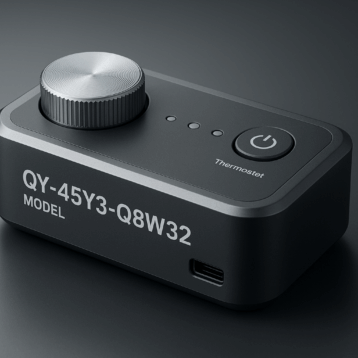
There are parts of IT security that are inherently complex. For example, thoroughly understanding and working with the nuts and bolts of cryptographic hashes takes a fair amount of math. Development of secure applications requires attention to detail and specialized knowledge.
However, there are also areas of IT where complexity is both unnecessary and can actually hamstring security. Hardening LANs and WANs are two great examples of this. Complex webs of firewalls, security appliances, and VPNs can be hard to manage, and thus create a number of blind spots. This leads to less secure networks and increases the likelihood of a breach. The concept is intuitive when you think about it: IT staff can’t possibly be an expert in every security tool and platform out there, so manual configuration can often lead to oversights.
Fortunately, in the world of SD-WAN, SD-WAN as a Service (a.k.a. SDWaaS) solutions are able to offer baked-in security features that streamline WAN security. The SDWaaS approach to security integrates it to the WAN and eliminates many of the blind spots and much of the complexity associated with legacy approaches to WAN security.
In this piece, we’ll dive into the inherent security advantages offered by SDWaaS and review two specific features that make it such a game-changer.
The SDWaaS Security Advantage
As SDWaaS shifts the paradigm users of legacy WAN solutions like MPLS (Multiprotocol Label Switching) are accustomed to, it is able to offer benefits that weren’t possible before. SDWaaS is truly converged and allows for a much more seamless experience. To understand why it is important to understand a bit about how SDWaaS works.
SDWaaS offers enterprises the flexibility and agility one would expect from SD-WAN but also supplements it with a robust, SLA-backed private backbone. As SDWaaS is cloud-based, it enables connectivity from effectively anywhere in the world. Not only does this add a layer of extensibility to SDWaaS, but it also means that the baked-in security features are inherent to the connection. This significantly reduces the need for complex security appliances and VPNs to be deployed, while helping reduce blind spots and oversights. Security policies are easy to implement and scalable, and features like Next-Generation Firewall (NGFW) further reduce organizational dependence on complex appliances.
In short, by integrating security directly into the WAN infrastructure, SDWaaS improves overall WAN security.
Modern Solutions: MDR & Zero-day Malware Protection
While SDWaaS has been capable of securing the modern enterprise WAN for some time, two recently announced features demonstrate the potential for SDWaaS to enable a more robust and proactive approach to security. These features are: integrated MDR (managed detection and response) services and an anti-malware engine that offers zero-day protection.
Managed detection and response (MDR)
MDR isn’t exclusive to SDWaaS, but SDWaaS makes it possible to do MDR in a modern, scalable, and simple way. Traditionally, MDR solutions required the installation of security and monitoring hardware and software across a network. Just managing the deployment and configuration of the hardware and software at scale can often be a challenge.
With SDWaaS MDR, because it is built into the larger WAN infrastructure, the integration is seamless. Further, SDWaaS come with a number of advanced features and functionalities, including:
- Zero-footprint visibility- Full WAN visibility, including metadata and traffic flows, can be achieved without deploying additional probes or agents.
- Algorithm-based automated threat detection– Machine learning enabled algorithms automatically detect anomalies in traffic flows and flag them for additional analysis.
- Threat containment– SDWaaS MDR can automatically contain live threats, for example by disconnecting an infected server from the WAN, to help limit the spread of breaches.
- Expert verifications & remediation assistance– SDWaaS MDR includes inputs from a team of experts that make up a Security Operations Center (SOC) team. These experts not only verify threats to reduce the likelihood of costly false-positives, they also offer assistance with remedying problems.
- Detailed reporting and tracking- Quarterly customized reports help enterprises quantify threats, risk levels, and affected endpoints on a regular basis.
All this comes together to make MDR an excellent way to proactively respond to threats to an enterprise WAN.
Zero-day malware protection
Zero-day exploits can be quite a scary proposition for enterprises. By their nature, they are unknown vulnerabilities that are difficult to prepare for. Fortunately, SDWaaS solutions now offer AI-based threat detection engines that are capable of detecting zero-day threats that do not already have a signature in a database.
With SDWaaS, the intelligent antimalware engine runs at Points-of-Presence (PoPs) across the global backbone and analyzes files as they traverse the WAN. As a result, the engine can detect and prevent zero-day malware before it reaches endpoints within the WAN.
This is a huge value-add in a world where threats to a WAN are more varied and complex than ever. There won’t always be a hard and fast way to identify malware, and this is where intelligent solutions, like an AI-based antimalware engine, can make a world of difference.
SDWaaS simplifies and secures the modern enterprise WAN
As we have seen, SDWaaS helps enterprises eliminate complexity while enhancing security. The integrated cloud-based nature of SDWaaS makes it possible to secure a WAN in a way that is both modern and scalable. Going forward, features like MDR and Zero-day malware protection will help ensure that enterprises that adopt SDWaaS are ahead of the curve when it comes to WAN security.










